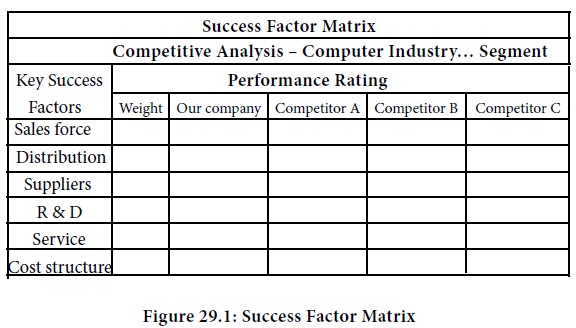Management Concepts & Organisational Behaviour - Benchmarking
Types of Benchmarking
Posted On :
Three major types of benchmarking that have emerged in business are:
Types of
Benchmarking
Three major types of benchmarking that have emerged in business are:
1. Performance benchmarking or operational benchmarking,
2. Process benchmarking or functional benchmarking, and
3. Strategic benchmarking.

Three major types of benchmarking that have emerged in business are:
1. Performance benchmarking or operational benchmarking,
2. Process benchmarking or functional benchmarking, and
3. Strategic benchmarking.
Performance Benchmarking
Involves pricing, technical quality, features and other quality or
performance characteristics of products and services. Performance benchmarking
is usually performed by direct comparisons or “reverse
engineering” in which competitor’s products are taken apart and analyzed.
This process is also known as “operational benchmarking: or “competitive
benchmarking” and involves studying of products and processes of
competitors in the same industry.
Process Benchmarking
Centres on work processes such as billing, order entry or employee
training. This type of benchmarking identifies the most effective practices in
companies that perform similar functions, no matter in what industry. For
example, the warehousing and distribution practices of L.L.Bean were adapted by
Xerox for its spare parts distribution system. Texas Instruments studied the
kitting (order preparation) practices of six companies, including Mary Kay
Cosmetics and designed a process that captured best practices of each of them
and thereby cutting the cycle time by 50 percent. Companies should not aim
benchmarking solely at direct competitors and it would be mistake if they do
so. If a company simply benchmarks within its own industry, it may be
competitive and have an edge in those areas in which it is the industry leader.
However, if benchmarks are adopted from outside the industry, a company may
learn ideas and processes as well as new applications that allow it to surpass
the best within its own industry and to achieve distinct superiority.
Strategic benchmarking
Examines how companies compete and seeks the winning strategies that
have led to competitive advantage and market success. One way to determine how
well a company is prepared to compete in a segment and to help define a
best-in-class competitor is to construct a Key Success Factor (KSF) matrix
similar to the one shown in figure

Tags : Management Concepts & Organisational Behaviour - Benchmarking
Last 30 days 510 views












